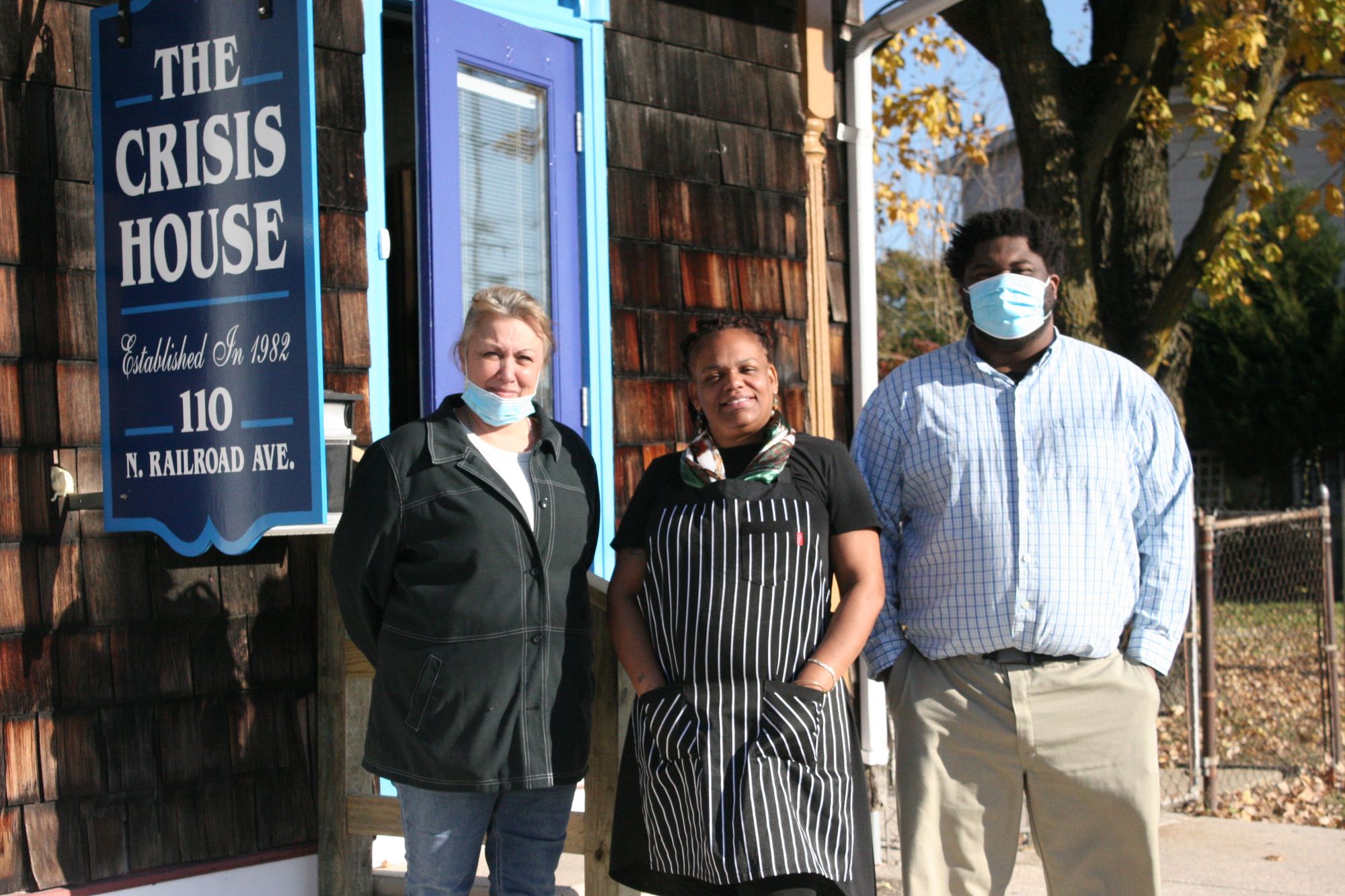Housing crisis: Why are so few developers building affordable homes?
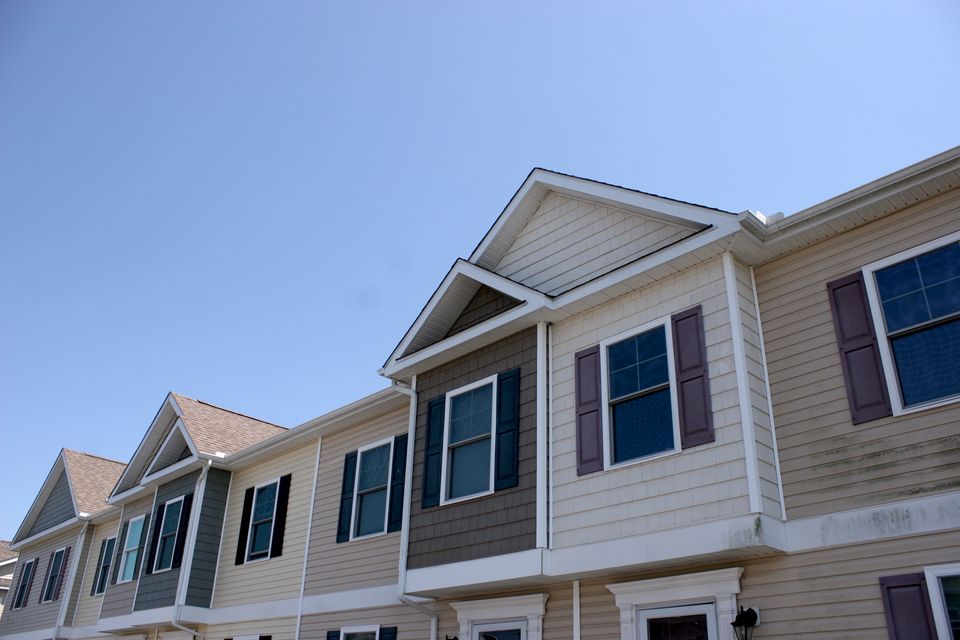
The critical shortage of affordable housing in southern Delaware prompts a simple question: Why not get busy building more, as soon as possible? After all, the demand is there, so why don’t builders meet it?
As usually happens with simple questions, the answer isn’t so easy. Those who have studied the issue say building affordable housing is often complicated to finance, can face stiff opposition from neighbors, and doesn’t profit developers like building more upscale housing does.
The consequences of this crisis include a rise in homelessness, as well as working families spending large chunks of their income on housing and being forced to make long commutes to jobs.
We’ve explored that in previous articles in the Independent, including one last fall about the rise in homelessness and how a lack of affordable homes contributes to the problem. Another piece in June examined affordable housing more closely, including some ideas for possible solutions like changing rules to allow for tiny houses. But those didn’t really answer the question of why developers aren’t building units fast enough to meet the burgeoning demand.
I spoke to people with experience working on the issue of affordable housing, and they gave several reasons why developers aren’t showing more enthusiasm. For starters,
The market isn't working
The simplistic version of how a market is supposed to work is that supply and demand balance each other out, ending up with prices that most people can afford and that compensates builders fairly. In theory, if there’s a demand for lower cost homes, somebody will meet it.
In the real world it’s always far more complex and the system can get out of balance. And when it does, people can’t just decline to pay for housing until prices come down. They instead have to devote more and more of their income to housing, possibly ending up on the street. (Affordable housing is often defined as not exceeding 30 percent of a person’s income, as they also have to eat, buy clothes and medicine, and so on.)
In lower Delaware, the market housing rate is simply higher than a lot of people can afford, even when it comes to rentals.
“The private market is not addressing this issue,” said Russ Huxtable, vice president of Milford Housing Development Corporation, a nonprofit that builds and maintains affordable housing in the area. The efforts of other groups are coming up short too.
For example, if it costs the same amount for a nonprofit to build an apartment unit as it does a for-profit developer, he said, that developer can charge $1,400 a month, which helps them afford the debt needed to finance the project, while MHDC may be charging only $600 a month for the same unit.
That’s why it’s so important for the state and other local jurisdictions to invest in affordable housing, Huxtable said. “Because right now, just wishing that the private market does it, because there’s an underserved market, they won’t.”
Even if a builder took zero profit, a project might still end up out of the reach of people with lower incomes. Suraj “Sunny” Gyani, of Georgetown, now retired but formerly a developer who did some affordable housing projects, ran through some numbers: Say the lot costs $30,000, septic costs $20,000, and the house itself costs $125,000 in materials and labor. That’s already at $175,000.
And there’s also plenty of demand for higher priced homes, as Sussex County is getting a flood of new residents who want large, single-family retirement houses. Builders make more profit on those than on affordable housing.
“You go to the beach side, and you see all these people moving from Philadelphia and New Jersey, New York, and D.C. area,” Gyani said. “For them, this is cheap. Half a million dollars is a cheap house.”
Most of Delaware’s existing housing stock is single-family detached houses, despite the increased demand for rental housing, according to the Delaware State Housing Authority. This state agency promotes affordable housing and helps state residents on the lower end of the income spectrum purchase homes.
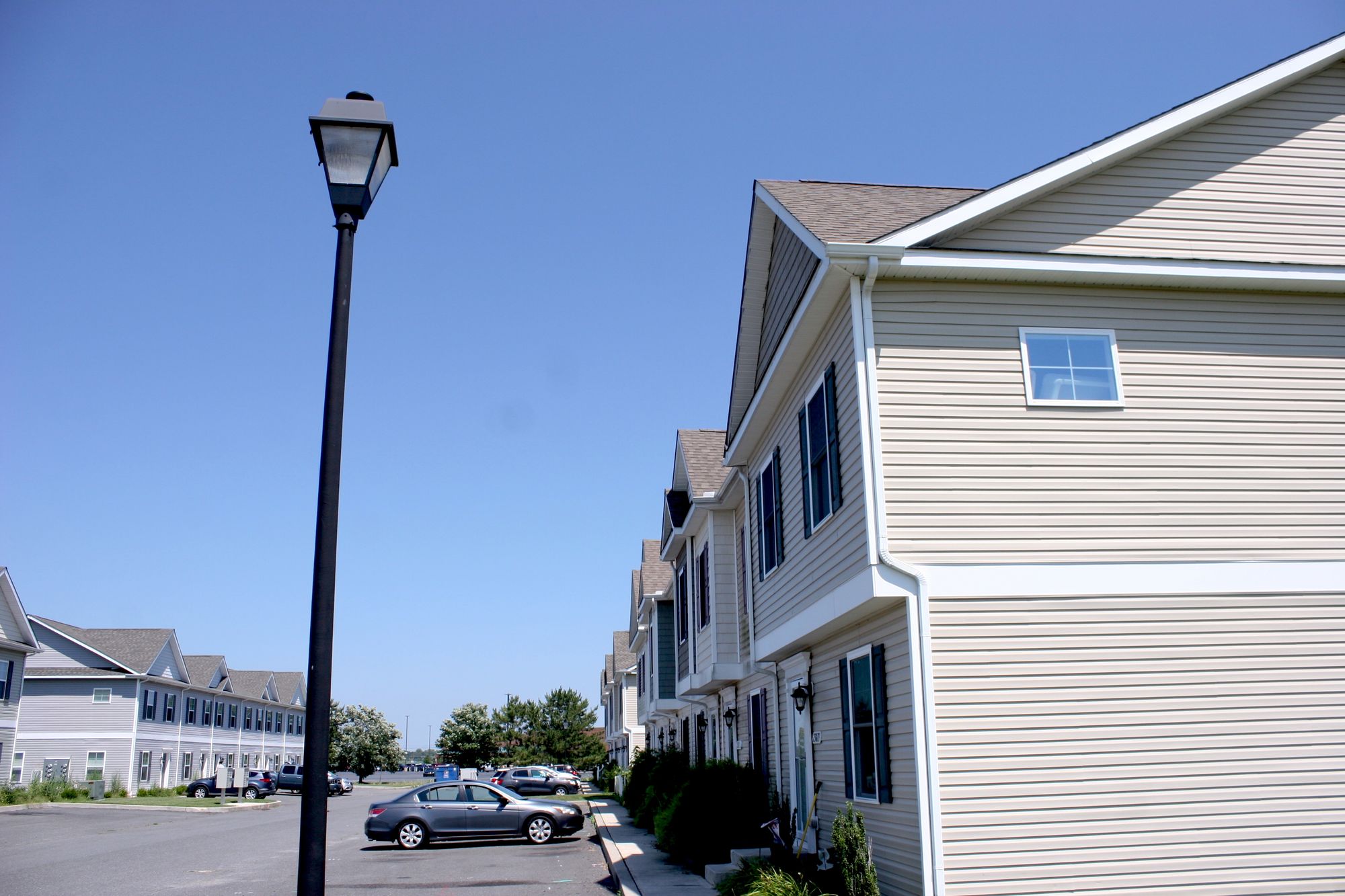
Less flexibility
As far as profit, can’t developers make some extra money on affordable housing since they are charging rent to more people?
It’s true that higher density means developers can fit more households in a given space. But that doesn’t make up for charging less in rent than the market rate.
“It’s not as simple as just, you get more bank for your buck with more density. You do get some economies of scale for sure,” Stephanie Griffin, director of development with DSHA, said – but any development benefits from that kind of efficiency.
“These companies have investors … they want to see what the return on their investment is,” Gyani said.
And if developers commit to keeping an apartment complex at affordable rates over a certain period of years, it leaves them less flexible.
“If they see that they need more income to break even, they can’t just raise their rents like a lot of the market rate homes can do. So their hands are kind of tied,” Javier Horstmann, chief policy advisor with DHSA, said.
“It’s just easier to build a really nice, fancy house and sell it for $600,000,” Huxtable said. “Because you can, and they’re doing it all day long.”
Grants come with strings attached
Federal and state money, though organizations like Huxtable’s need it, creates other issues. For one, getting it is complicated and time consuming.
To layer four or five or more different funding sources into a project, each with its own regulatory agreement, “is quite a process,” Huxtable said.
That can add expenses that don't come with building more valuable homes.
“You’re often doing public and private partnerships, you’re using federal resources, which come with their own set of reporting requirements … so there can be more, we call them soft costs,” Griffin said.
For another thing, that extra money only goes so far.
“Delaware is able to do about three, sometimes four projects a year with the (federal) funds that they get,” Huxtable said. “So we’re only talking like 150, 170 units of new affordable housing,” some of which are just preserving existing stocks.
His Milford nonprofit is one of the beneficiaries of Sussex County’s recent $6.8 million effort to boost affordable housing. (Most of that money is from the federal American Rescue Plan).
But Huxtable noted that because of the need, there was high demand for this program, and each winning project is capped at $500,000 in aid. In the first round of awards the county gave out $2.5 million for five projects, which will build about 75 new units and rehabilitate almost 40.
Compare that to the need: The state is now thousands of units behind on affordable housing, Huxtable estimates.
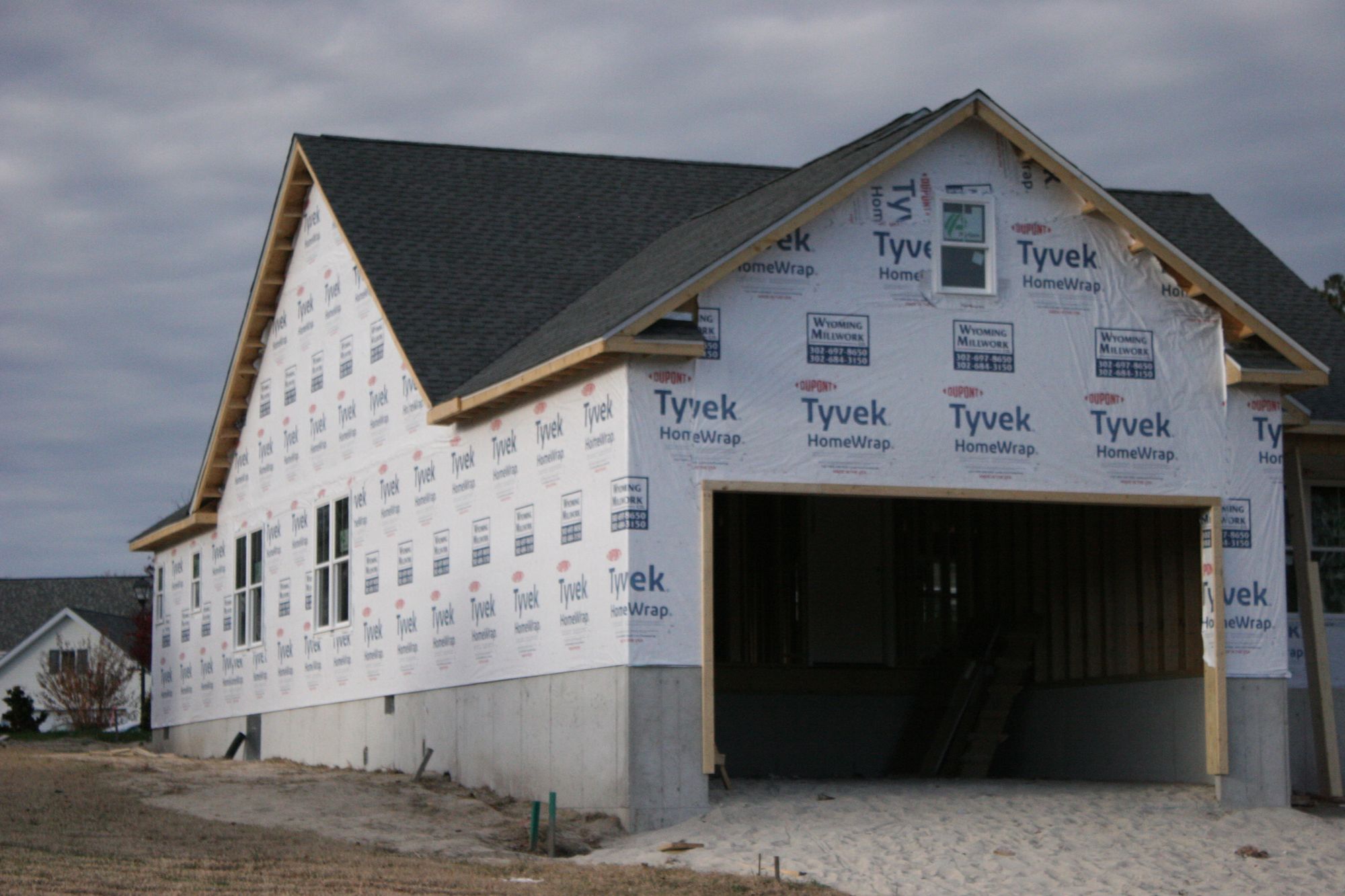
Neighbors don't want this housing
If money for developers is a huge factor in the lack of affordable homes, community pressure only adds on.
“Anybody that wants to build affordable housing, or go into that construction space, really captures a lot of backlash from the community itself,” Horstmann said. “... I think that does deter a lot of developers, that they just don’t want to be the black sheep of the family by going into affordable housing development and having that kind of tag attached to their company.”
A well-known term for this backlash is NIMBY: Not In My Backyard. People may be in favor of affordable housing, but they don’t want to live next to it.
Laurie Jacobs, a spokesperson for DSHA, listed in an email a number of projects in recent years that had gone south after community pressure. A 2018 proposal for 150 multi-family units on 12.5 acres on Route 1, just north of the Five Points intersection, she wrote, faced fierce opposition and County Council denied it because it was “not in character with the surrounding area,” which was made up of single-family homes.
A developer tried again at the same spot in 2019, with a plan for 168 multi-family units (only 21 of which would have counted as affordable). In that case, Jacobs wrote, “Although approved by the County’s Planning and Zoning Commission, ongoing public opposition led the developer to withdraw the proposal.”
Another proposal for 45 units, she said, was along Muddy Neck Road near Ocean View, an area “with very few affordable options, and (it) faced significant and well-organized public opposition,” including 1,200 letters. Only 16 units were approved.
Complicating things is that this issue goes beyond affordable housing. For their part, many residents are concerned about the impact to the environment and local quality of life from what they see as overdevelopment, and that includes upper class homes too. The tension has sparked protests over the last year outside Sussex County offices.
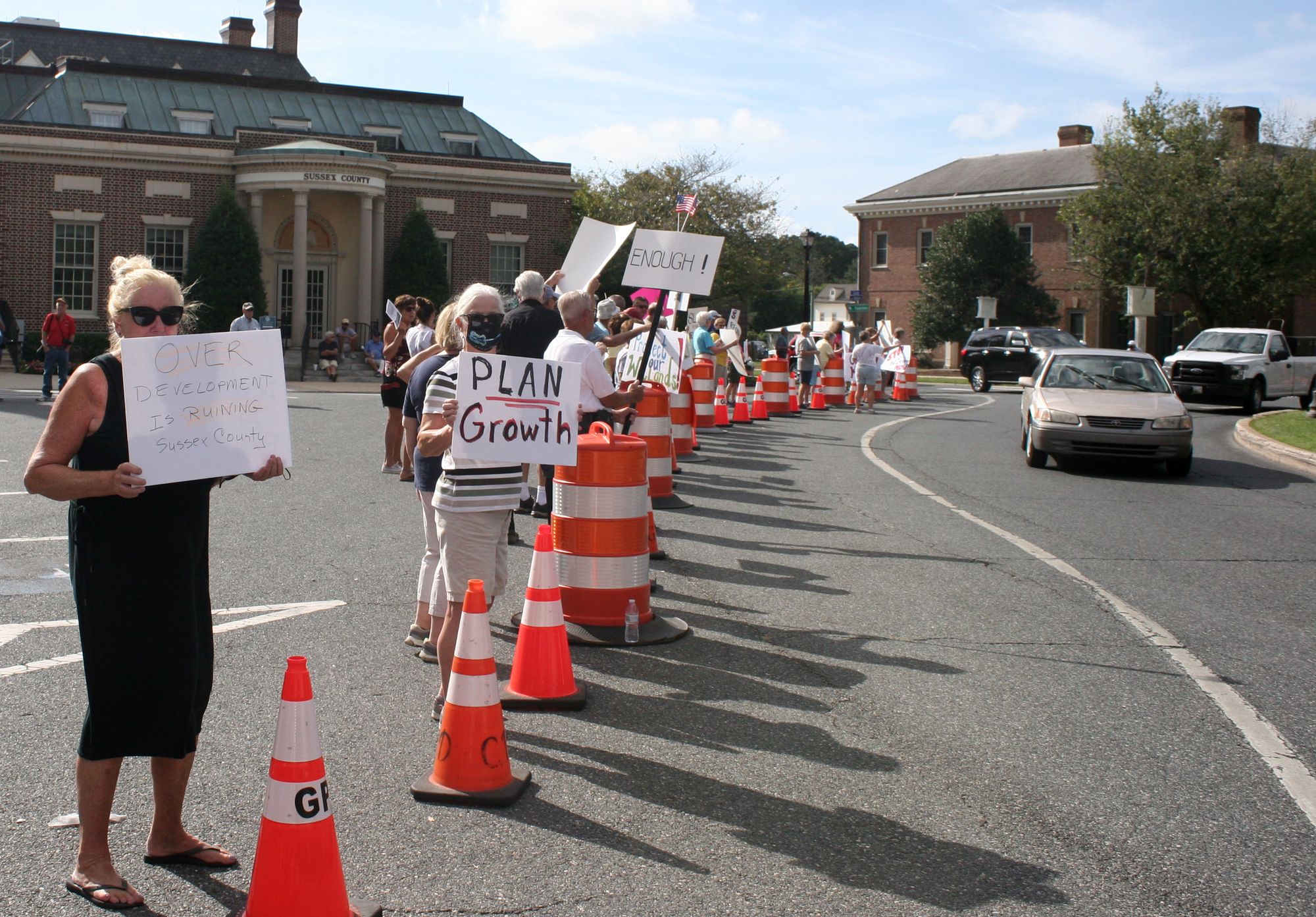
Land use red tape
If developers overcome opposition and decide to build affordable housing despite lower profits, they still have to find a place to build. And that’s where another important barrier comes in: Land use laws.
In many parts of the county, zoning limits the number of units per acre, and if developers want to go over that density, they have to get approval from the county and meet certain conditions. Land use comprehensive plans add a patchwork of zones where development is either encouraged or frowned on, and the rules can get incredibly complicated, keeping lawyers gainfully employed.
Sometimes, Huxtable said, it’s hard to find the right parcel in Sussex to match up with the planning and zoning.
“Depending on where you’re targeting to build these, there might not be zoning for the higher density that is required for this type of development,” Griffin said. “... That’s a bit of a barrier, because you have to go through a rezoning and a land use process, which can be timely, it can be expensive.”
At a June Sussex County Council vote on one multi-family housing project, which the Council approved, Councilman John Rieley observed, “The planning and development of this whole process is pretty lengthy and expensive.”
The Council is trying to deal with that with its proposed workforce housing ordinance. According to presentations from staff, this would increase the number of allowable units to 12 per acre in a number of areas, including coastal zones, as long as the project contains at least 30 percent affordable units and meets other requirements. It also allows an increase in building height. The rental rates in the affordable units would be based on federal estimates of area median income.
Developers would not have to go through a public hearing to get approval, which appears to be an effort to reduce the impact of resistance from neighbors.
“Time is money,” Rieley said. “Speed to market is critical to make that work, and the uncertainty of making a substantial investment with an unknown percentage of possibility that it could be turned down … that’s a major hurdle that we have to overcome.” He called it a tradeoff, acknowledging public concerns over getting rid of the public hearing.
One of those who expressed concerns was Huxtable, who wrote an op-ed in the Cape Gazette commending the effort to deal with affordable housing, but arguing that they should not do away with the requirement for a hearing.
He told the Independent that “we don’t deal with the unintended consequences of growth very well,” and that doing away with the public hearing requirement can circumvent the public’s input on issues.
In the past when he’s testified about affordable housing projects MHDC is doing, he said, he’s had no problem explaining its benefits to people at the hearing who were opposed. “I don’t mind that sort of interaction.”
At a public hearing at the end of June, the workforce housing ordinance got a lot of praise, but also a lot of criticism for removing the public hearing process.
“One of the responsibilities of the (Planning and Zoning) Commission is to hear and consider the voice of the public,” Jill Hicks of Lewes told the Council. “... To allow the developer to construct a high density unit in residential zones … by right, or without a public hearing is a grave mistake. I do agree that the process to improve workforce housing should be expedited, but not in this way.” She said it would “add fuel to the public sentiment that the commissioners, your appointees, are in bed with developers.”
Notably, Sussex 2030, the group that organized the development protests, has expressed cautious support for the new ordinance in general, but objected to the part about the public hearings.
However, some housing advocates offered strong backing to the ordinance.
“I am very excited to lend my support to this new ordinance,” said Katie Millard, director of development and advocacy for Sussex County Habitat for Humanity. She suggested creating some kind of oversight and a review period, but added, “This is a really wonderful first step to increasing affordable housing in Sussex County.”
Fixing a complex issue, as Millard told the Independent for a prior story, means trying more than one solution.
“I have seen an interest in affordable housing that I’ve never seen before,” Horstmann said, which gives him hope. “So I think that there is an interest at all levels. And for better or worse, it’s just kind of in the very preliminary process of brainstorming and figuring out what our options are.”
Further reading on housing in Delaware:

